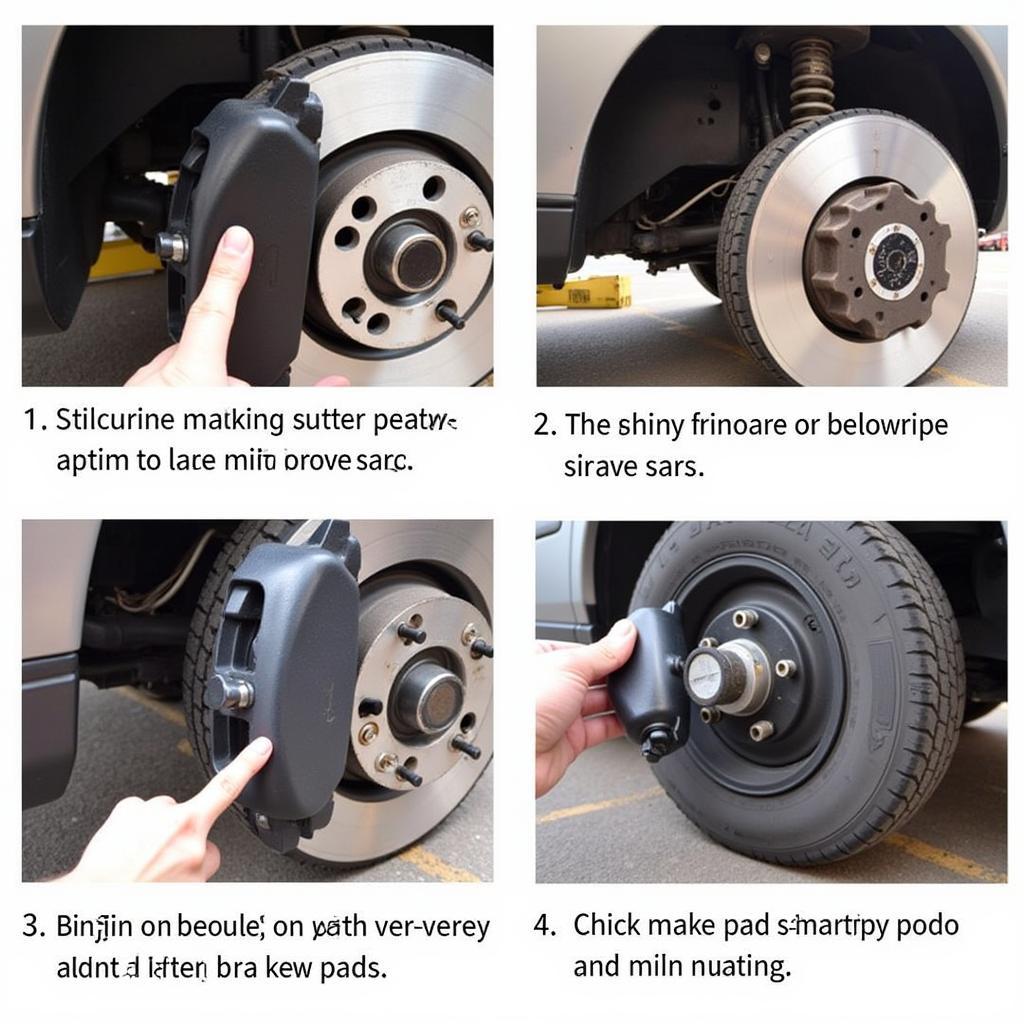The Vectra C brake pad warning light is a crucial safety feature, alerting you when your brake pads are worn and need replacing. This guide provides a comprehensive overview of how to reset the Vectra C brake pad warning light after replacing the pads, covering various methods and troubleshooting common issues.
Understanding the Vectra C Brake Pad Warning System
The brake pad warning system in your Vectra C utilizes sensors embedded within the brake pads themselves. These sensors trigger the warning light on your dashboard when the pad material wears down to a critical level. Ignoring this warning can lead to significant damage to your braking system and compromise your safety.
How the Brake Pad Sensors Work
The brake pad sensors are simple yet effective. They consist of a small wire loop embedded within the brake pad material. As the brake pad wears down, this wire eventually comes into contact with the brake rotor. This contact completes a circuit, triggering the warning light on your dashboard. It’s important to remember that the light doesn’t necessarily mean the pads are completely worn, but it does signal they require immediate attention.
 Vectra C Brake Pad Sensor Closeup
Vectra C Brake Pad Sensor Closeup
Resetting the Vectra C Brake Pad Warning Light
After replacing your brake pads, you must reset the warning light. There are a few ways to accomplish this:
-
Manual Reset: Some Vectra C models allow for a manual reset using a combination of button presses on the instrument cluster. Consult your owner’s manual for the specific procedure for your model year.
-
OBD-II Scanner Reset: An OBD-II scanner is a diagnostic tool that can communicate with your car’s computer. Most OBD-II scanners can reset the brake pad warning light. Simply plug the scanner into your car’s OBD-II port, usually located under the steering wheel, and follow the scanner’s instructions.
-
Remote Software Reset: For certain Vectra C models, remote software solutions are available that allow technicians to reset the warning light remotely. This is a convenient option that eliminates the need for physical access to the vehicle.
Common Issues and Troubleshooting
Sometimes, the warning light might persist even after replacing the brake pads and attempting a reset. Here are some common issues and troubleshooting steps:
-
Faulty Sensor: The new brake pads might have a faulty sensor. Check the sensor for damage or improper installation.
-
Wiring Issue: There might be a problem with the wiring connecting the sensor to the car’s computer. Inspect the wiring for any breaks or loose connections.
-
Incorrect Reset Procedure: Ensure you followed the correct reset procedure for your specific model year. Refer to your owner’s manual or consult a qualified technician.
“Regular brake maintenance, including pad replacement and sensor checks, is paramount for safe and efficient driving,” says John Miller, a senior automotive technician with over 20 years of experience. “Don’t ignore the warning light – it’s there for a reason.”
Why is my brake warning light still on after changing the pads?
A persistent brake warning light even after pad replacement could indicate a faulty new sensor, wiring issues, or an incorrect reset procedure.
 Replacing Brake Pads on a Vectra C
Replacing Brake Pads on a Vectra C
Conclusion
Resetting the Vectra C brake pad warning light is an essential part of brake maintenance. By understanding how the system works and following the appropriate reset procedure, you can ensure your Vectra C’s braking system operates safely and efficiently. If you encounter any issues, don’t hesitate to consult a qualified technician. Regular maintenance and prompt attention to warning lights are crucial for your safety and the longevity of your vehicle. Remember, addressing brake issues promptly can prevent more serious problems down the road.
“Early detection and addressing brake issues is key to minimizing repair costs and ensuring optimal vehicle performance,” adds Maria Sanchez, a certified automotive engineer specializing in braking systems. She emphasizes the importance of proactive maintenance to avoid potential safety hazards.

